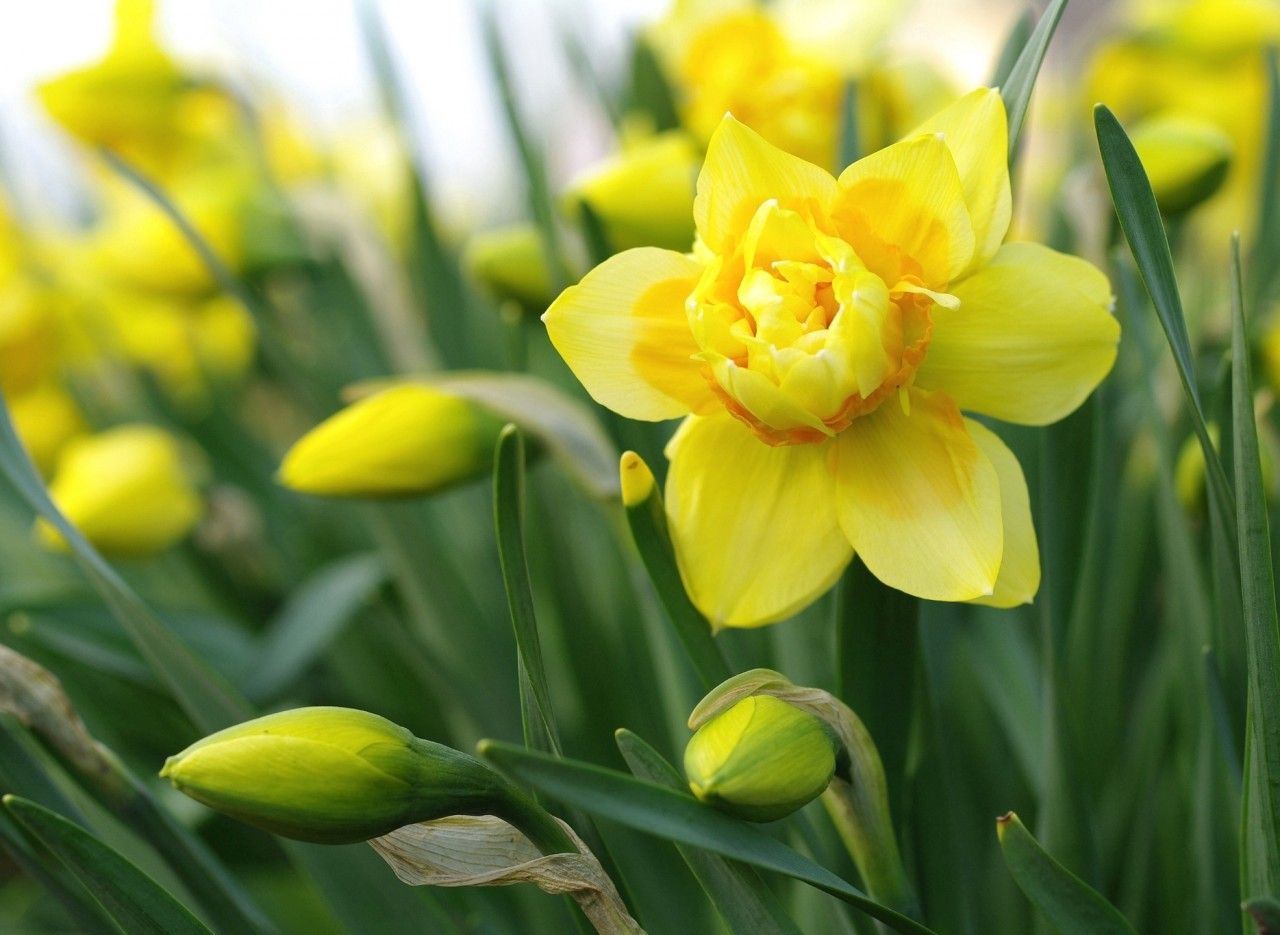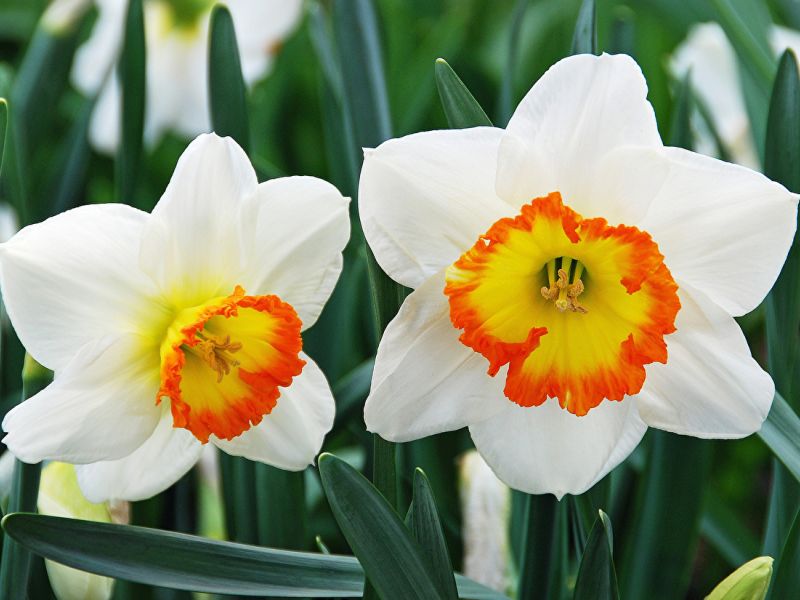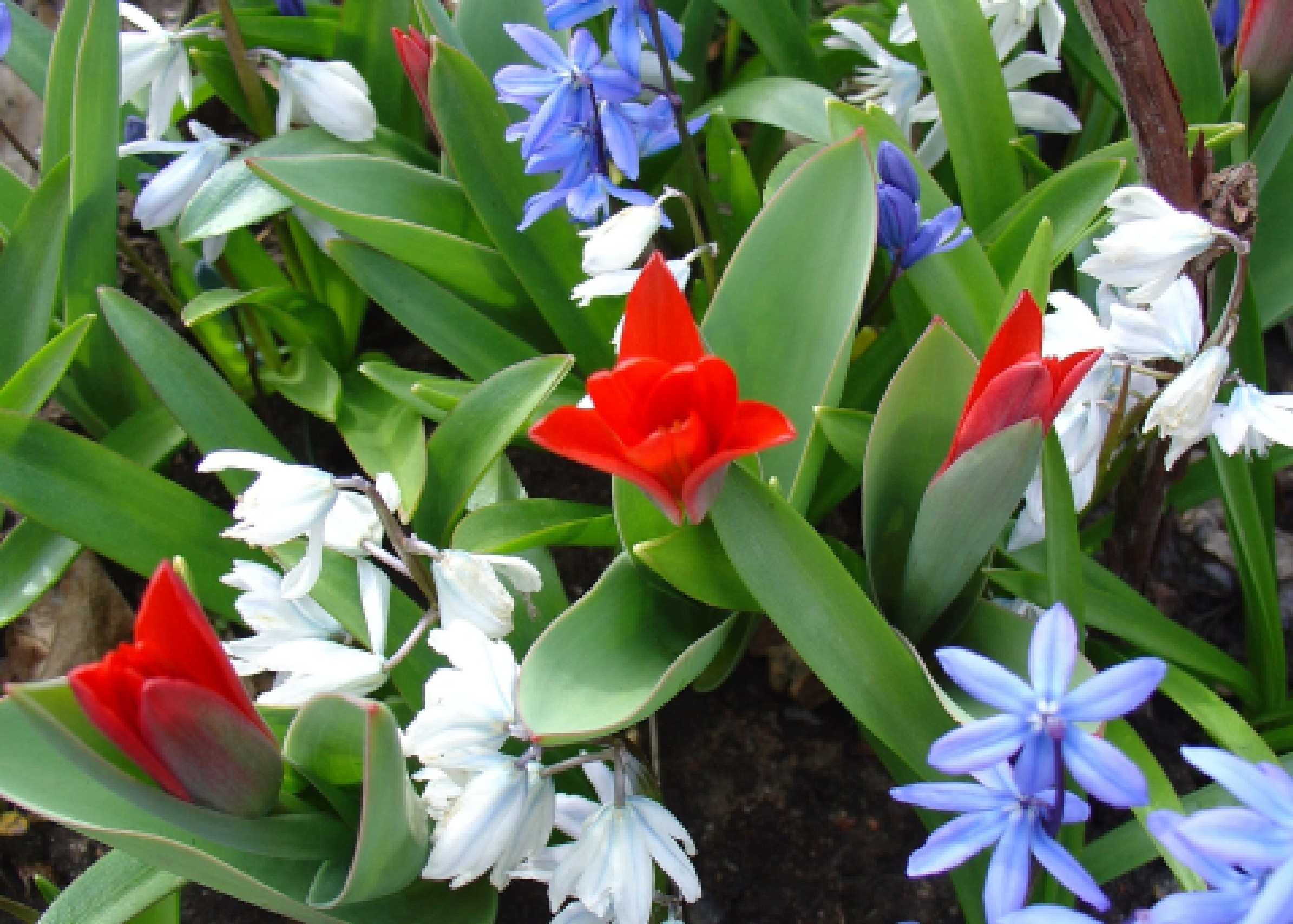The daffodil flower belongs to the Amaryllis family of plants. It is monocotyledonous and blooms in a decorative way, blooming with the first rays of the sun in spring. Together with tulips and crocuses, it is these flowers that decorate gardens so that they are bright and colorful. Today we will talk about the peculiarities of growing and planting these flowers, how to care for daffodils and other nuances.
Content
Where did daffodils come from?
In nature, today there are about 60 species of daffodils, but a maximum of 25 of them are actively used for cultivation in gardens.
Naturally, the daffodil grows in southern Europe, as well as the Mediterranean and Asia. This flower is shrouded in many legends, many stories and legends have been written about him... For example, everyone knows the ancient Greek myth of Narcissus, and in Italy this flower is considered a symbol of love. In many European countries, it is impossible to imagine any wedding without daffodils.
What do daffodils look like?
Narcissus can grow up to half a meter in height. Its root system is a dense bulb. Its shape depends on the type of flower, it can be:
- pointed;
- round;
- oval;
- ovoid.
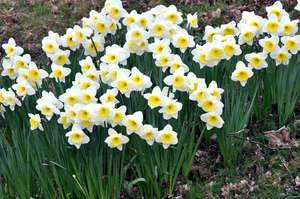 Some species have a rhizome based on several bulbs that form a nest. Flower leaves are like ribbons of different widths... On one bush they are most often, no more than four pieces. The leaflets appear earlier than the inflorescences. And the stems of daffodils can have a round or flattened shape, the inflorescence is located at the top of the plant. Flowers, depending on the variety, erect or drooping.
Some species have a rhizome based on several bulbs that form a nest. Flower leaves are like ribbons of different widths... On one bush they are most often, no more than four pieces. The leaflets appear earlier than the inflorescences. And the stems of daffodils can have a round or flattened shape, the inflorescence is located at the top of the plant. Flowers, depending on the variety, erect or drooping.
One stem contains one flower or a raceme with 2 to 8 flowers. The perianth is similar in shape to a funnel, and the perianth differs from the petals in color, and has the shape:
- tubes;
- cups;
- bell.
The flower can be from 2 to 10 cm in diameter. Shade of daffodils - yellow... When the flowering period ends, the fruit appears in the form of a seed box. Among gardeners, daffodils are popular not only for their appearance, but also for the ease of planting and subsequent care. Growing daffodils is possible even for novice amateurs.
Features of planting daffodils
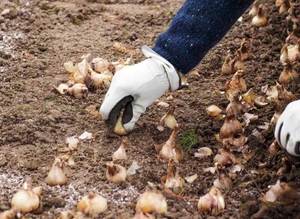 In central Russia, the optimal period for planting daffodils is mid-August - early September. Some gardeners recommend planting the bulbs immediately after digging. In their opinion, such an event will protect the bulbs from drying out during storage and will make it possible to better take root and develop the root system until frosts come. It is believed that in this case, daffodils tolerate winter better and bloom well in spring.
In central Russia, the optimal period for planting daffodils is mid-August - early September. Some gardeners recommend planting the bulbs immediately after digging. In their opinion, such an event will protect the bulbs from drying out during storage and will make it possible to better take root and develop the root system until frosts come. It is believed that in this case, daffodils tolerate winter better and bloom well in spring.
Before planting and in order to prevent gray rot and fusarium, plant bulbs must be pickled in a small solution of potassium permanganate. The size of the bulbs affects the distance between plants and the depth of planting.... Also in this case, the mechanical composition of the soil and the duration of growing daffodils in this area matter.
If the soil is heavy, the planting depth will be shallower than on light soil. Above the bulbs without mulch, you need to leave a layer of soil of about 10 cm. Bulbs are usually planted at three heights, you need to count from the bottom to the surface of the soil. A distance of about 2 bulb diameters must be observed between the plants.
When planting for many years, the distance should be at least 15 cm between the plants. And when the nests grow, the feeding area changes, and the bulbs become smaller, respectively, the plant needs to be replanted. In hot weather, daffodils must be watered.... In the first winter after planting, they need to be covered with leaves or peat. And in the second and further, only double and tacetto-shaped flower varieties are covered, which are most exposed to cold weather.
Follow-up care for daffodils
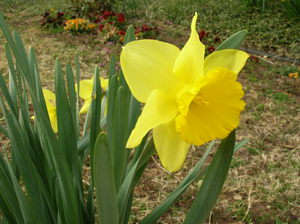
Growing a daffodil after planting involves extra careful grooming during the first season. If it is due, then in subsequent years the daffodil will bloom perfectly and delight the owners of the site.
In the first spring after planting, you need to remove the shelter after the end of winter. Further care includes the following activities:
- loosening the soil;
- top dressing;
- weeding;
- watering.
It is recommended to loosen the soil immediately after watering, fertilizing and rain. Water the flowers as needed, but you do not need to do this to the full depth of root deposits... Remember that daffodils are very sensitive to the lack of liquid in the soil.
Watering features
 After flowering, the daffodil especially needs hydration. After the plant fades, the leaves do not lose their color for about a month and a half and accumulate nutrients in themselves. Then they go into the scales of the bulbs for storage. In the bulb itself, the process of organ formation begins: elements of young plants are laid in soils of different ages.
After flowering, the daffodil especially needs hydration. After the plant fades, the leaves do not lose their color for about a month and a half and accumulate nutrients in themselves. Then they go into the scales of the bulbs for storage. In the bulb itself, the process of organ formation begins: elements of young plants are laid in soils of different ages.
But no way do not allow water to stagnate in the ground, this can lead to rotting of the bulbs. When planting the plant, provide a good drainage system for this purpose.
In central Russia, watering time should continue until late June or early July, when the leaves begin to wilt. Do not forget about abundant watering of daffodils during the period when buds are formed, that is, in the second half of April, when the soil is completely dry from snow. If you do not fill the plant's needs for the missing liquid, then the buds risk drying out. Remember, when watering during flowering, do not let the water fall on the petals.
Daffodil fertilization rules
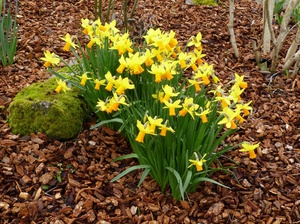 Regardless of when the planting was carried out (in winter, early spring or autumn), the plant bulbs after it live and develop due to the previously accumulated nutrients. When sprouts appear above the ground, this the need for nutrition increases, and you need to replenish it artificially with fertilizers.
Regardless of when the planting was carried out (in winter, early spring or autumn), the plant bulbs after it live and develop due to the previously accumulated nutrients. When sprouts appear above the ground, this the need for nutrition increases, and you need to replenish it artificially with fertilizers.
As it grows and develops, the amount of substances consumed by a flower grows and reaches a maximum when a large number of buds, peduncles and leaves are formed.
If the soil is not fertile, then it is recommended to carry out several dressings during the season: the first three of them should be carried out during mass shoots, the appearance of buds and flowering using the mineral fertilizer nitroammofoski. The norms are as follows:
- 100 grams per square meter for the first time;
- 60-70 grams per square meter further.
For the fourth time, the plant is fertilized after flowering, while 40 grams of phosphorus and 20 grams of potassium are required per square meter.
The above standards are approximate, the final dose can be determined only through an agrochemical analysis... On developed fertile areas, the rates can be reduced by 2 or 3 times. Top dressing should be combined with watering and loosening the soil.
Other subtleties of caring for daffodils
Growing daffodils should also be accompanied by the following conditions:
- the area chosen for planting them must be protected from wind and drafts;
- lighting should be bright and diffused, if the daffodil grows in the shade, its inflorescences will be small;
- in summer, the plant loves temperatures within the range of about 20 degrees Celsius, and in winter - at least five degrees with a plus value.
As for the transplant of a narcissus, this must be done without fail once every 3-5 years. But in some cases, if the care is correct and regular, you can do without it.
How do plants reproduce?
Daffodils reproduce through bulbs and babies. The bulbs are harvested as soon as the foliage turns yellow. If you do not do this in time, then they will begin to root. When digging, the earth must be separated from the old roots and leaves.
Further the bulbs are dried for several days, then scanned and sorted by size, separating the babies from the uterine samples. If the bulbs are damaged or diseased, they must be destroyed. Then the remaining samples are disinfected using a special agent, which must be diluted in a proportion of 50 grams per 10 liters of water. Then they are dried again.
How to store bulbs before planting
Bulbs cannot be stored in plastic bags, they do not allow them to breathe normally, so they can rot. To store them, you should choose cool and well-ventilated place... Narcissus bulbs give off gas, if not checked, they will suffocate. The air temperature in a semi-dark room should be about 10 degrees, and the humidity should be about 70 percent.
The bulbs themselves must be spread out in a thin layer in a tray or on a wire rack. In winter, you need to monitor them regularly and remove sick and soft samples, otherwise they can infect others. Among the symptoms of diseases are the following:
- yellow and white spots on the outer skin;
- darkening of the bulbs;
- unpleasant odor.
Medicinal properties of narcissus
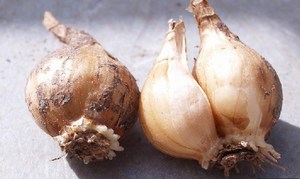
So, we talked about the intricacies of growing daffodils and caring for them. Many also know that this plant has medicinal properties.
For example, women with mastitis can use this recipe:
- peel the daffodil bulb;
- chop it and mix with rye flour or thick rice porridge;
- applied to the sore chest. When the product dries, rinse it off with warm water.
The procedure is carried out 2-3 times a day in the absence of allergy to components... It can manifest itself as itching or redness, in which case such treatment should be discontinued. And these are far from all the properties of a narcissus; if you wish, you can find more information on this topic.
Narcissus is a delicate and mysterious plant that is rightfully considered an adornment of almost any garden. Subject to all the rules of care, it will delight you for more than one season.
